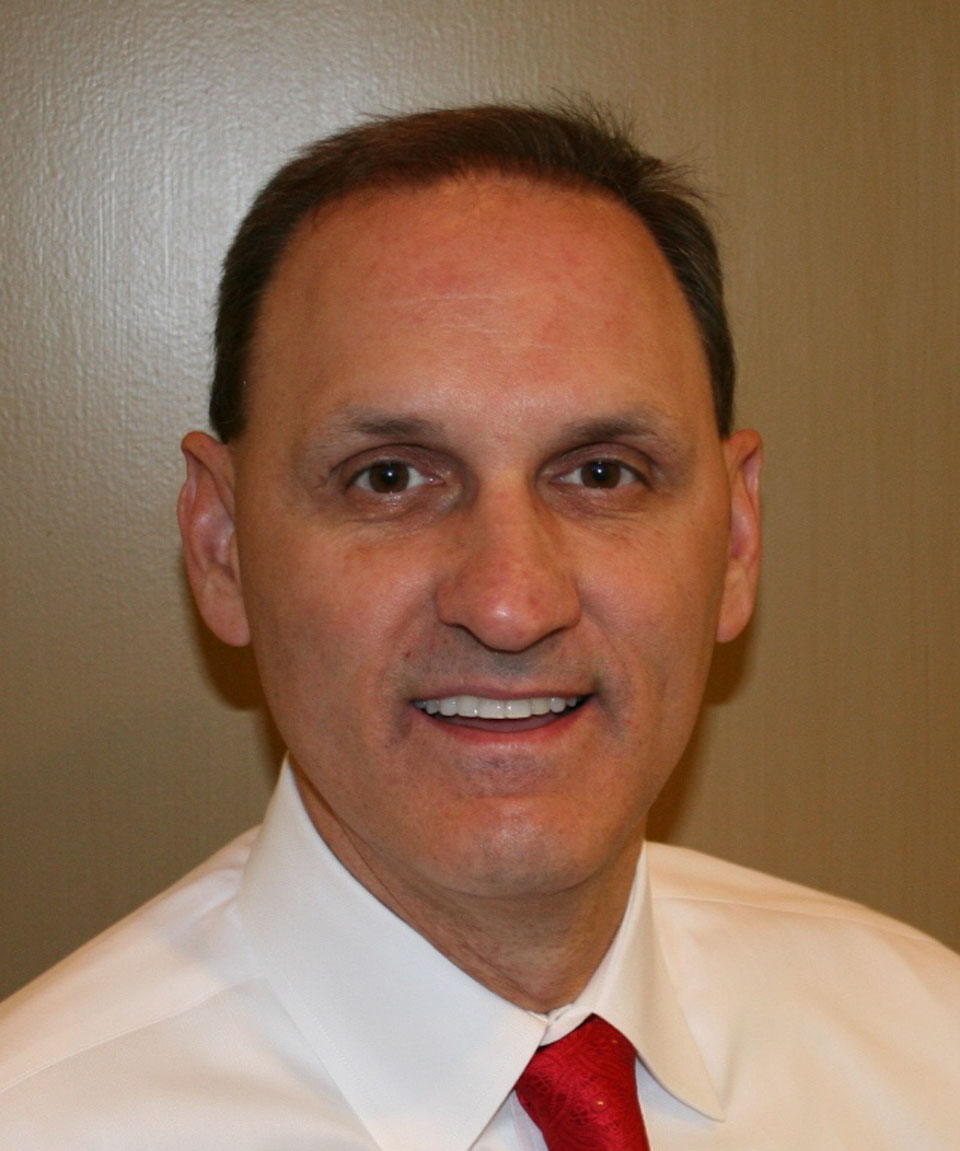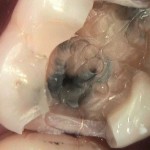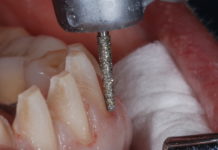
Traditionally, dentistry has been a business based upon need. However, I have found that when my patients truly value dental health and wellness, then, at the very least, they are more appreciative of my services and more compliant with my recommendations. Even more impressive is that they banish the mentality that “if insurance doesn’t cover it, then I don’t want it.”
Patients will disregard insurance limitations and choose ideal restorative and preventative treatments, which often include cosmetic options. This is because of their newfound desire for the dentistry that will provide them with ideal dental health, aesthetics, and longevity. I explain to them how I have transformed my practice from a need-driven business into a business thriving on patient desire for the very best that dentistry has to offer.
The power of bruxism
Quite simply, my success in presenting extensive treatment plans relies heavily on three factors. First, you must help your patients find value in their dental health. Second, they must feel confident that they are in the right place—that not only will you competently and beautifully restore their teeth, but that they are truly cared for in your practice. Finally, they must understand that bruxism (tooth grinding) is the underlying cause of their current dental situation, and that it can be stopped, promising dental health and wellness lasting far into the future.

 Over the past 24 years in private practice, I have found that bruxism is not only under-treated but incredibly under-diagnosed. Furthermore, it has become clear to me that most of my extensive restorative and cosmetic treatment plans exist because of the dental deterioration initiated by bruxism. Do not underestimate the power of bruxism. Early evidence becomes visible as mild wear and chipping, which is commonly overlooked. More advanced signs of bruxism are, unfortunately, a combination of advanced damage, including generalized severe occlusal and incisal wear, abfractures, bone loss, non-restorable broken teeth, and a history of broken teeth with resulting crowns and root canal treatments.
Over the past 24 years in private practice, I have found that bruxism is not only under-treated but incredibly under-diagnosed. Furthermore, it has become clear to me that most of my extensive restorative and cosmetic treatment plans exist because of the dental deterioration initiated by bruxism. Do not underestimate the power of bruxism. Early evidence becomes visible as mild wear and chipping, which is commonly overlooked. More advanced signs of bruxism are, unfortunately, a combination of advanced damage, including generalized severe occlusal and incisal wear, abfractures, bone loss, non-restorable broken teeth, and a history of broken teeth with resulting crowns and root canal treatments.
Of course, I see patients with dental needs resulting from other destructive habits such as dental neglect, poor oral hygiene, consistent sugar consumption, and even drug use. However, these situations are not nearly as common as the patient suffering from the devastating effects of bruxism. Additionally, bruxism is often an unconscious habit, unlike sugary diets or poor hygiene. Consequently, patients do not feel as if they are being blamed or accused. Instead, they feel enlightened by the diagnosis. Suddenly, there is an explanation for all of the unexplained problems they’ve had over the years. In fact, they feel empowered by the solution, an appliance that can protect against further damage. Most importantly, they feel motivated to complete their restorative treatment plan because they are confident that once restored, their investment will last.
Unfortunately, many of my new patients have signs and symptoms of bruxism, but almost none have been told by their previous dentists. I understand the difficulty in convincing patients that they are “tooth grinders” because before use of intraoral photography in my practice, it was challenging to adequately illustrate the evidence I saw in their mouths. Patient education, combined with supporting intraoral photos, instills trust in the dental diagnosis of bruxism and, consequently, compliance in use of an appliance to protect against further damage.
Many times bruxism can be diagnosed before damage is extensive, resulting in, at most, a small treatment plan that includes a bite splint. Unfortunately, in many cases damage and deterioration is extensive, and the treatment plan consists of multiple restorative treatments, which include crowns, implants, and anterior veneers or crowns to restore aesthetics. For this reason, every new patient comes to my office for an initial diagnosis appointment.
Initial diagnosis appointment
The initial diagnosis appointment is a Dick Barnes inspired addition to my office protocol. At this initial visit, there are two goals. First, the patient should feel that their appointment was the most informative, somehow even fun, yet professional dental visit that they have ever experienced. Making the patient understand the importance of dental health and the rewarding benefits dentistry has to offer today isn’t merely the other goal; it’s my main priority. The appointment is a relatively short one but leaves quite an impression on each patient.
As expected, periocharting is done and radiographs are taken, but the magnified intraoral photos on the computer monitor captivate patients. Patients are astounded to see how their teeth really look and are sometimes horrified by the defects yet unable to look away. They are ready to hear what I have to say to improve their condition. Many times they ask me how to fix something before I have a chance to diagnose a problem. Broken fillings, cracked teeth, and recurrent caries become visible and indisputable in the photos. Even cosmetic issues become increasingly important to patients as they take this closer look. In fact, there seems to be an incredible sense of urgency. So, as I list the diagnoses to my assistant, I confirm the patient’s concern that there are some problems. Patients become desperate to get answers.
I answer the most important question my patients have, which is “How did my teeth get so bad?” I love to use their photos to prove that bruxism is ultimately the underlying cause. Cracks through the enamel act as a port of entry for bacteria causing the cavity until eventually it enters the nerve, causing the patient to need root canal therapy. Chipped or broken incisal edges and cusp tips absolutely do not occur when chewing food if the teeth are not previously worn and the crystaline structure of enamel isn’t already weakened from the strong occluding forces of bruxism. Abfractures absolutely are not from brushing too hard, rather they are a result of the crushing forces of bruxism compressing the tooth and allowing crystalline tooth structure to shatter and flake away little by little until notching is noticeable. In fact, many patients actually complain that these abfractures are sensitive to brushing. Teeth with abfractures are commonly accompanied by bone loss as the forces of grinding are too much for supporting periodontal tissues of the tooth to withstand. Furthermore, instead of asking the patient how they lost a missing tooth (or teeth), I ask if they lost the tooth because it was cracked or broken. Their answer usually strengthens my argument that a long history of clenching and grinding is responsible for much of their existing damage and must be stopped if they want to prevent further deterioration. They are actively participating in the diagnosis and almost begging for a treatment plan. But I don’t give them a plan, at least, not yet.
While their time with me is finished, the “diagnosis appointment” is not over. They go home, visualizing the images of their teeth, complete with cracks, chips, breaks, recurrent caries, and stains in addition to what they perceive to be problematic. They are accepting the fact that there is some work to do, perhaps more than they originally anticipated, and they are opening their mind to what I might have to say. Their pleasant experience reaffirms that they came to the right place. They appreciate how well they were treated by everyone they encountered, including me. Even to the most anxious and fearful patient, at this nonthreatening initial visit, I wasn’t seen as the wicked dentist holding an extra long needle in one hand with a screaming drill in the other. I was a nice person having a conversation with them. The intraoral photos suggest and support the condition of their teeth and gums, and some time spent alone with those memorable images opens their mind to the treatment plan.
Presentation of treatment
Presentation of the treatment plan is incredibly influential in the patient’s decision to accept treatment. I never leave my patient feeling hopelessly burdened by an extensive and costly treatment plan. I have offered them the facts stating the condition of their teeth and gums at their previous visit. Now they must see that this is only their current situation and that we will work together to achieve health and beauty. They deserve the best dentistry available, and it should last far into the future.
The fact that such an extensive treatment plan exists because teeth have been damaged by the forces of bruxism becomes instrumental in the patient’s motivation to accept treatment. Blaming bruxism, at least in part, for their current dental state actually relieves them of shame and embarrassment because even if they were aware of the grinding, they’ve been unaware of the resulting harm. They are desperate to get the bite splint, but impressions for the bite splint must wait until after much of the dental work is complete in order to preserve the completed dental investment.
Since implementing this protocol, treatment plan acceptance has dramatically increased for two main reasons. Patients understand the underlying cause of their dental problems and now have the power to protect their teeth and their dental investment. More importantly, they view their dentist as someone who truly cares about them and wants to preserve their teeth and ultimately prevent additional costly dental treatment.
 Bruxism should be evaluated in patients of all ages, specifically in young adults. If bruxism can be diagnosed and prevented when the signs are present but before true damage has begun, the teeth can be preserved for a lifetime with proper diet, oral hygiene, and routine dental visits. Why wait until the patient has extreme dental destruction, pain, and/or lost teeth before offering a bite splint to prevent further deterioration? Patients are devastated to learn that this destruction could have been prevented. However, they understand that once their treatment is complete, it can be protected and preserved with nightly use of a bite splint.
Bruxism should be evaluated in patients of all ages, specifically in young adults. If bruxism can be diagnosed and prevented when the signs are present but before true damage has begun, the teeth can be preserved for a lifetime with proper diet, oral hygiene, and routine dental visits. Why wait until the patient has extreme dental destruction, pain, and/or lost teeth before offering a bite splint to prevent further deterioration? Patients are devastated to learn that this destruction could have been prevented. However, they understand that once their treatment is complete, it can be protected and preserved with nightly use of a bite splint.
I have found an appliance that has proven itself to be the superior bite splint in my practice. It is called a Nocturnal Trigeminal Interceptive Tension Suppression System (NTI). The NTI, unlike other splints, helps to eliminate jaw muscle contraction. Instead of giving you something to clench and grind on all night long, every tooth squeezing it with equal force. The NTI actually interferes with the muscle contraction. Consequently, the benefits are tremendous. Occlusal surfaces and incisal edges are protected, which is a benefit of other splints. However, unlike other splints available, the teeth and periodontium are no longer exposed to the compressive force of clenching, saving teeth from the stress fractures, cracks, and abfractures and preventing bone loss and gingival recession. The bruxism habit is alleviated, literally saving teeth from the abuse that leads them down a vicious path of dental deterioration.
I believe that everyone can preserve their 18-year-old dentition beyond their 90th birthday if only they can be protected from the unnecessary destructive forces of bruxism. Diagnosing bruxism and recommending an NTI offers a rewarding service to my patients, and I believe over time it will become a standard of care. The patient will save money, prevent dental discomfort, and maintain oral health and beauty.
Production has increased in my office. My patients are happy with me for having goals of prevention rather than restoration, and those who originally came in need of major restorative work are happy to have smiles that they can be proud of once again. Not only have they proclaimed themselves to be lifetime hygiene patients, who may need occasional maintenance work, but they are referring everyone they care about to their incredible dentist to restore and protect their bruxism-afflicted mouths. Dentistry is in high demand at my office because my patients want the very best that dentistry has to offer, and it is my desire to provide it to them— restoratively, cosmetically, and, most important, preventatively.










